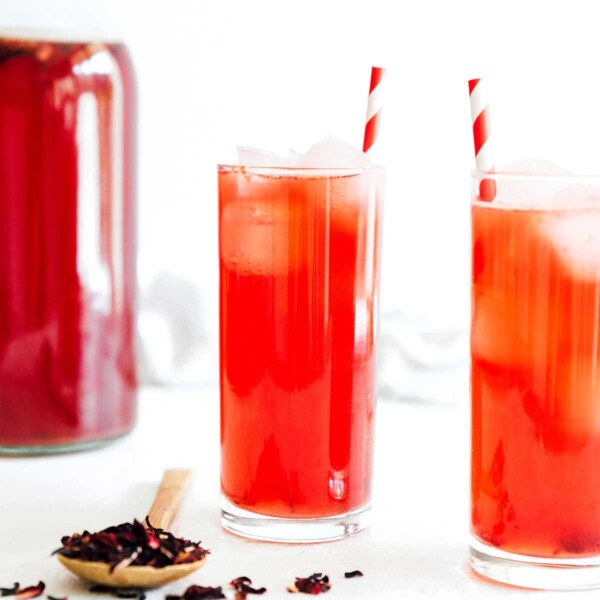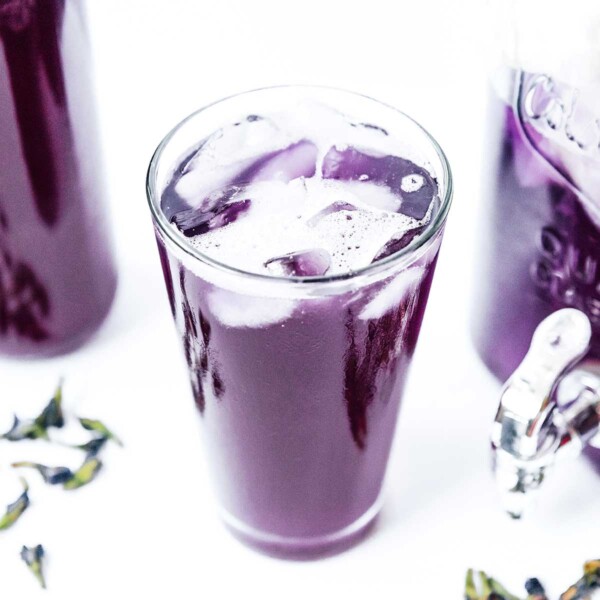Whether you like earthy or floral notes, we are covering all different types of green tea in this helpful guide to 16 types of green tea!
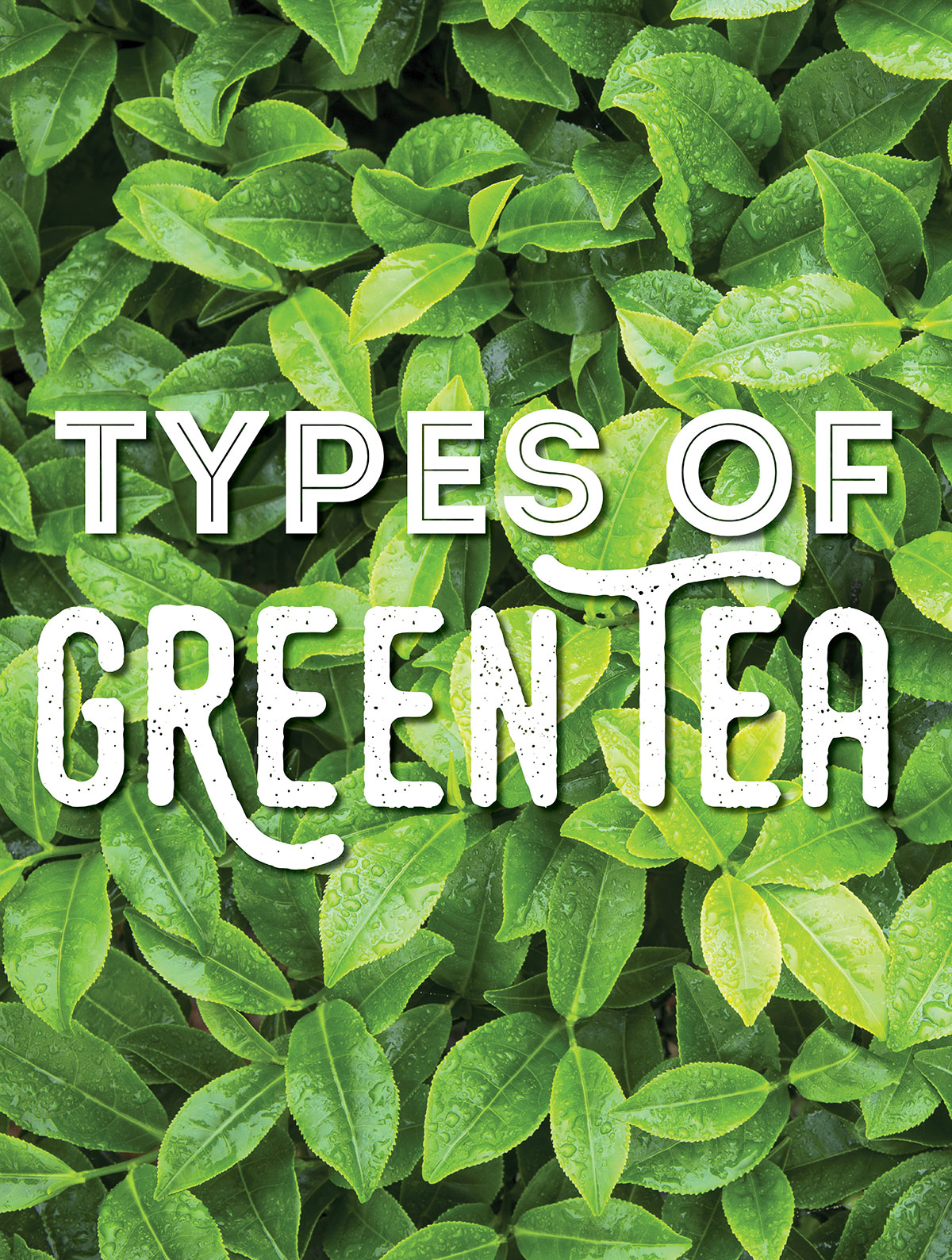
Green tea is more than just matcha, and if you want to learn more about the other varieties, then it’s your lucky day! We will give a brief description of each of these green teas and then dive further into the specifics of each, so you can learn as much or as little about each as you wish.
Green tea kombucha is one of our favorite ways to use this tea variety. Most of these types of green tea work well for kombucha brewing!
Trivia Time! We have all heard the expression “Not for All the Tea in China” which pretty much means not at any price. But, where and when did this expression come from? Scroll to the bottom of the article for the answer.
1. England in the Mid 18th Century
2. Australia in the Late 19th Century
3. China in the 12th Century
4. Japan in the Early 20th Century
Types of Green Tea
- Bancha
- Genmaicha
- Gunpowder
- Gyokuro
- Hojicha
- Jasmine
- Kabusecha
- Kamairicha
- Konacha
- Kukicha
- Longjing
- Matcha
- Moroccan Mint Tea
- Sencha
- Steamed Green Tea (Fukamushi)
- Tencha
Bancha
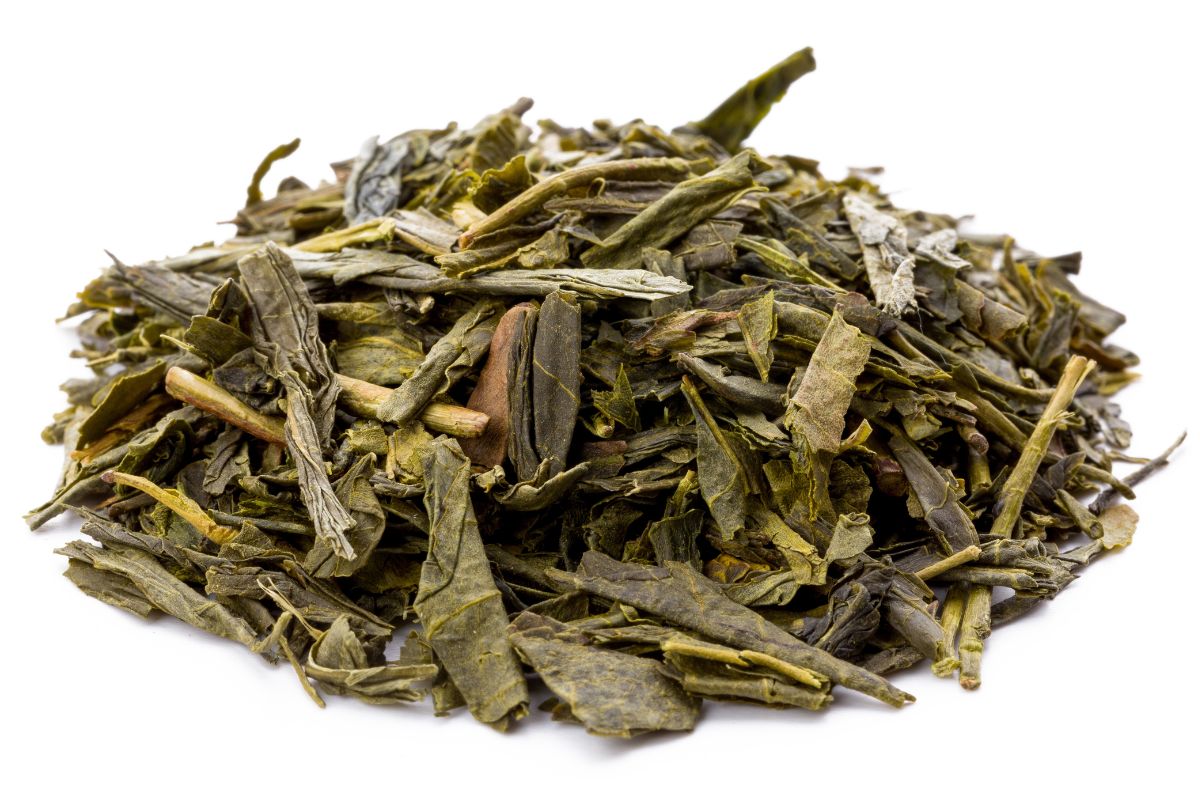
Bancha is a type of sencha tea. Sencha refers to the method of processing the tea leaves, which involves steaming and rolling the leaves to preserve their natural flavor and color.
Bancha is a Japanese tea with a mild grassy taste that is slightly nutty. While green teas are lower in caffeine than their black cousins, bancha is a low-caffeine tea among greens, so it is a good tea to drink throughout the day. It is made from larger and older tea leaves that are harvested in the late summer to autumn.
To make bancha tea steep the tea leaves in hot water, around 176-194°F (80-90°C), for 1-2 minutes. The steeping time and water temperature can be adjusted according to personal preference. Some people even brew bancha with cooler water to get a milder flavor. As with all teas, when you find your favorite experiment a bit with temperature and steeping time.
Genmaicha
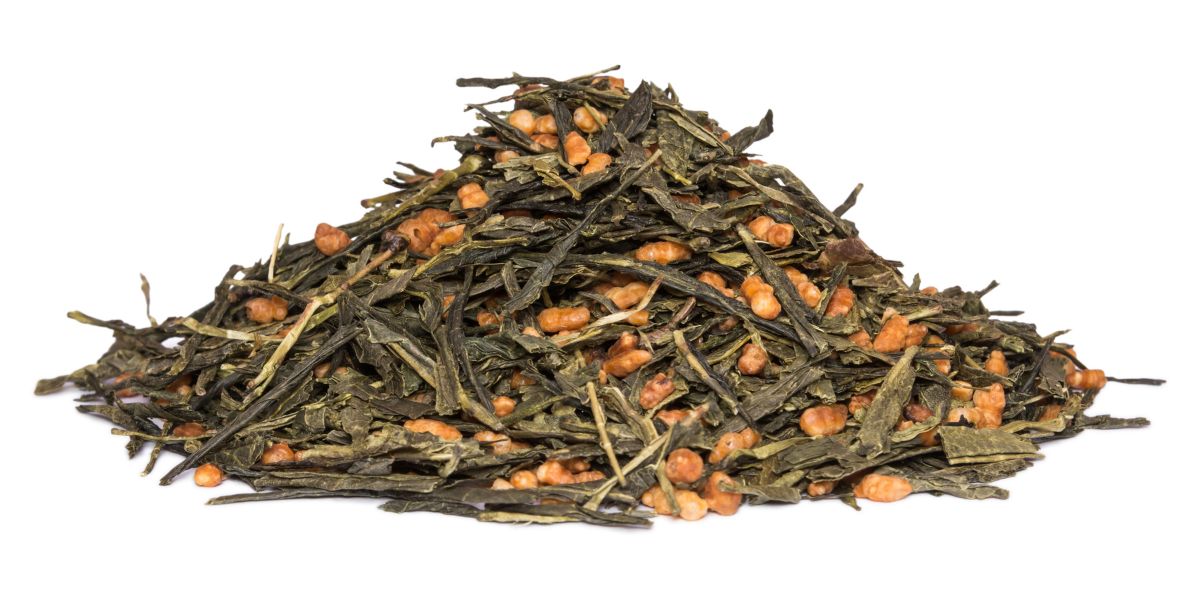
Genmaicha green tea is also called popcorn tea or brown rice tea. It comes to us from Japan where it has been a traditional tea drunk since the 15th or 16th century. It is made by combining roasted brown rice grains with green tea leaves. This practice started because people were poor, and rice was a lot cheaper than tea, but over time, it just became the way people liked their tea.
To be a little more specific, genmaicha is made by roasting the brown rice grains until they turn golden brown. Then, the roasted rice is mixed with the green tea leaves. The rice provides a nutty, toasty flavor and the green tea provides a fresh, grassy taste. The tea has a light golden color and a mild, earthy aroma.
One of the unique features of genmaicha is the presence of popped rice kernels in the tea. During the roasting process, some of the rice grains expand and pop, resembling popcorn. These popped kernels add an occasional pleasant crunch. It is a fairly low caffeine tea, so enjoy that crunch all day long.
Gunpowder
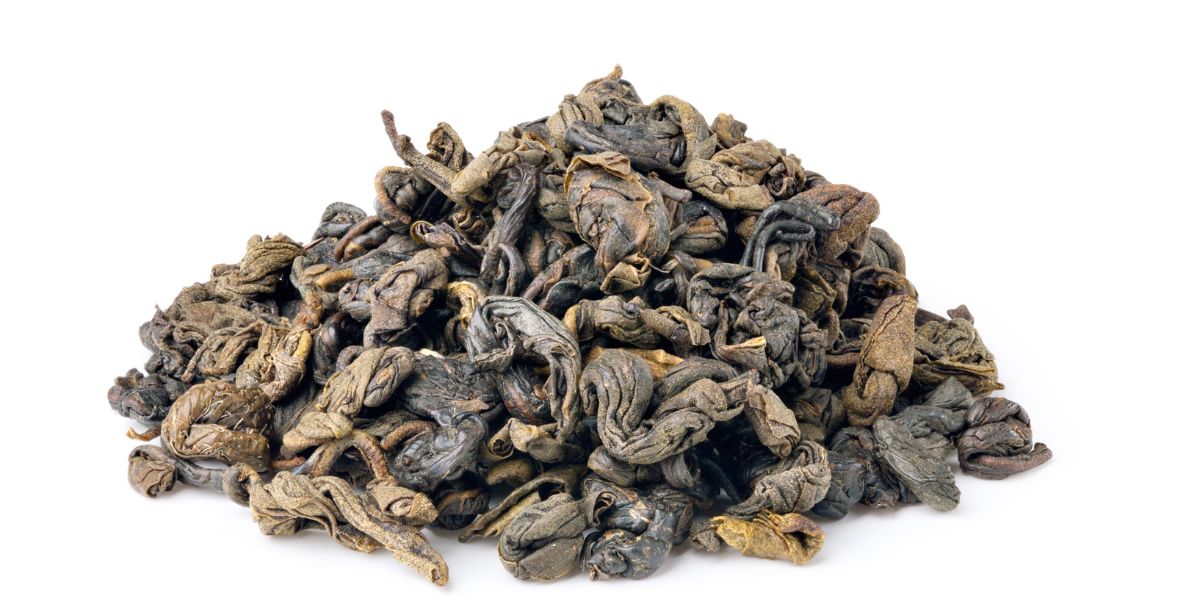
Gunpowder green tea is a Chinese tea that got its name as the tea leaves resemble gunpowder pellets used in early firearms. This speaks to how long the tea has been drunk. Gunpowder came out of China around 1250 CE.
The leaves are picked early in the season when they are young and tender, and are then steamed and rolled, usually by hand, but increasingly by machines built to mimic hand rolling. This results in leaves rolled into small pellets which help to retain the tea’s flavor and aroma. The flavor is smoky and slightly bitter with a grassy aroma. It has an average caffeine content (among green teas).
To prepare gunpowder tea, it is common to use water that isn’t boiling hot, usually around 176°F to 185°F (80°C to 85°C). Steep the tea leaves for about 2 to 3 minutes, or adjust the steeping time to your preference. The tightly rolled leaves gradually unfurl during brewing, releasing their flavor into the water.
Gyokuro
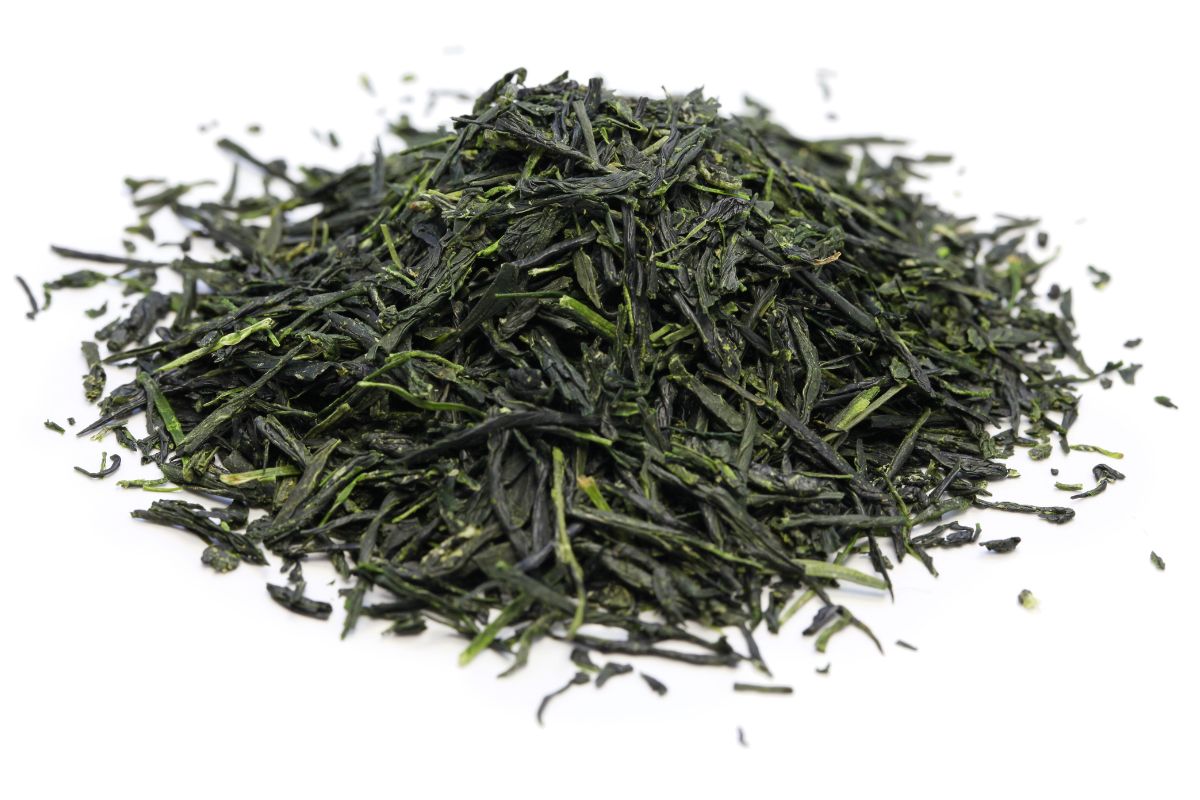
Gyokuro is a high-quality Japanese green tea that is also one of the most expensive. The name “gyokuro” translates to “jade dew” or “jewel dew.” It is expensive in part because it is grown in shaded conditions for several weeks before harvesting. Shading slows the growth of the leaves and increases the chlorophyll in them. This reduces the bitterness and gives it an umami flavor.
Gyokuro tea has a pale green hue, a sweet and grassy aroma, and a rich taste with hints of steamed spinach and a slight astringency. Brew gyokuro tea with water heated to only 60-70°C (140-158°F), steeping the leaves for 2-3 minutes.
Hojicha
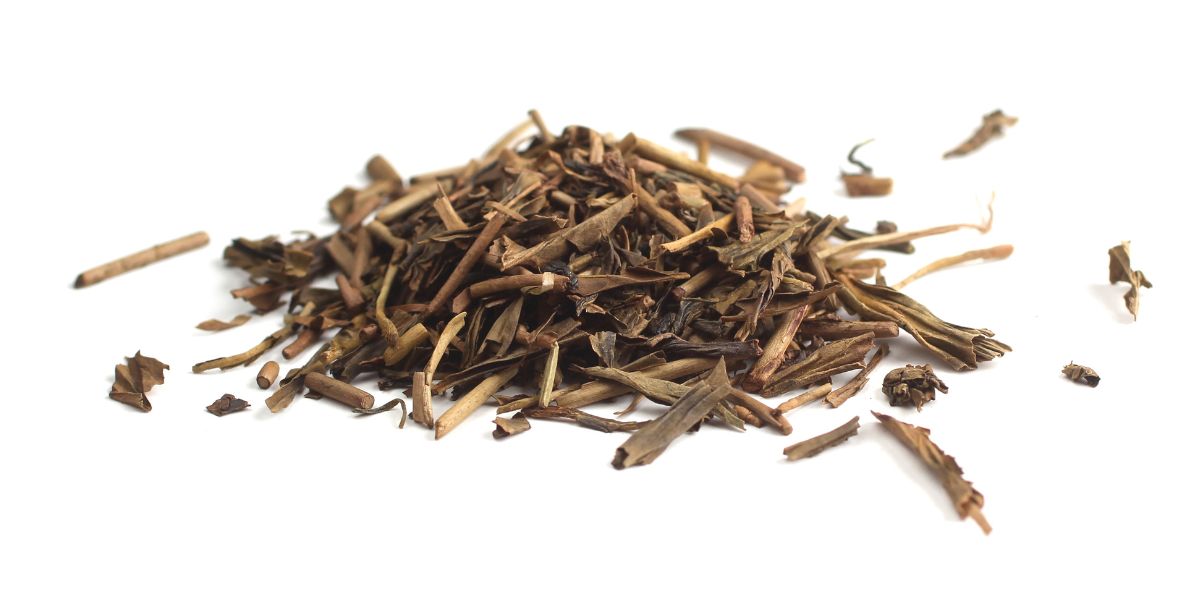
Hojichais a traditional Japanese green tea that is different due to its unique processing. The leaves are roasted at a high temperature in a porcelain or cast iron pot over charcoal until they turn a reddish-brown color. This gives the tea a toasty flavor with a nutty almost caramel-like taste. It has a lower caffeine level than other green teas making it a good all day tea.
Brew it with water around 90°C (194°F) for 30-60 seconds, depending on personal preference. The tea leaves can be steeped multiple times, and subsequent infusions may have slightly different flavors.
Jasmine
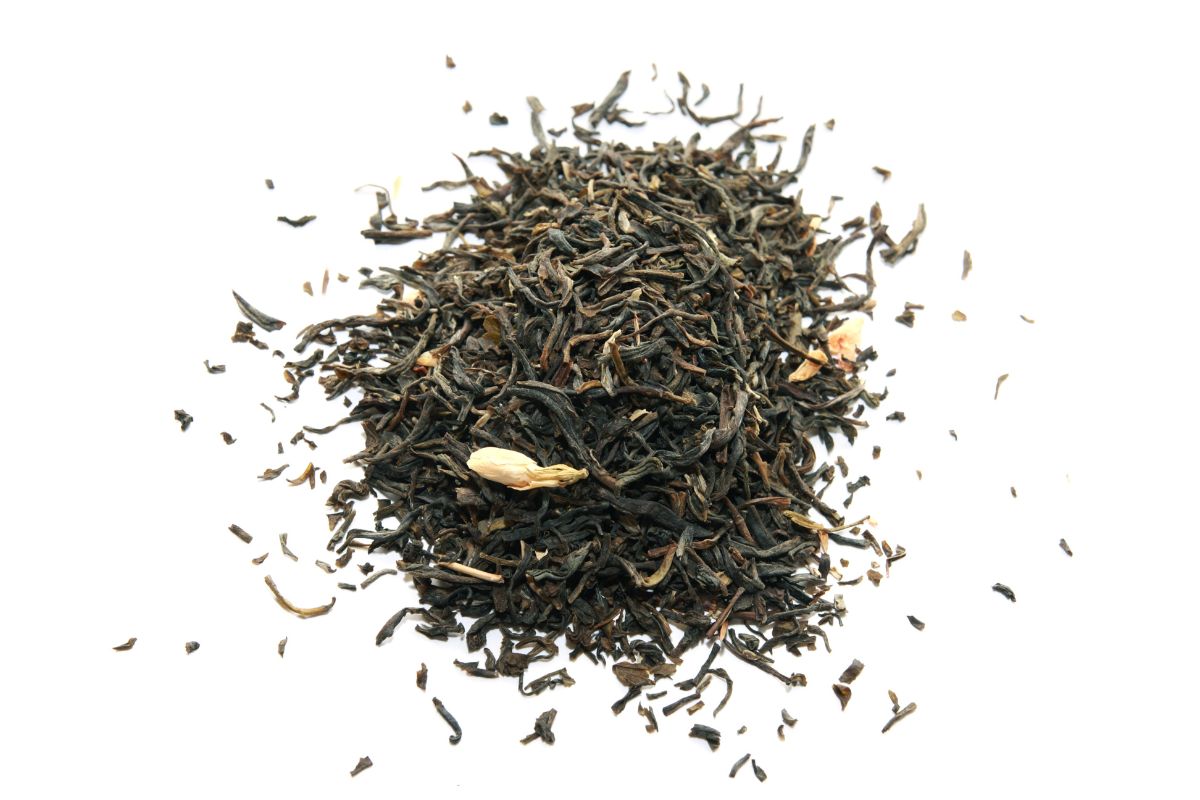
Jasmine is a scented tea from China that has become popular around the world. The tea leaves are combined with jasmine flowers. The flowers are usually picked in the morning when they are still closed and later mixed with the tea leaves when they open and release their fragrance. This ensures the tea leaves absorb the floral scent.
This, not surprisingly, gives the tea a nice floral aroma and a slightly sweet greasy taste. You can buy it as loose leaves or in tea bags. With either form, heat your water to around 175-185°F (80-85°C), which is well below boiling, and steep it for 2-3 minutes. You can adjust the brewing time and temperature to your preference. You can also experiment with multiple infusions using the same leaves to extract different flavors.
Jasmine tea is mostly made using green tea as the base, but it can also be made with white or black tea.
Kabusecha
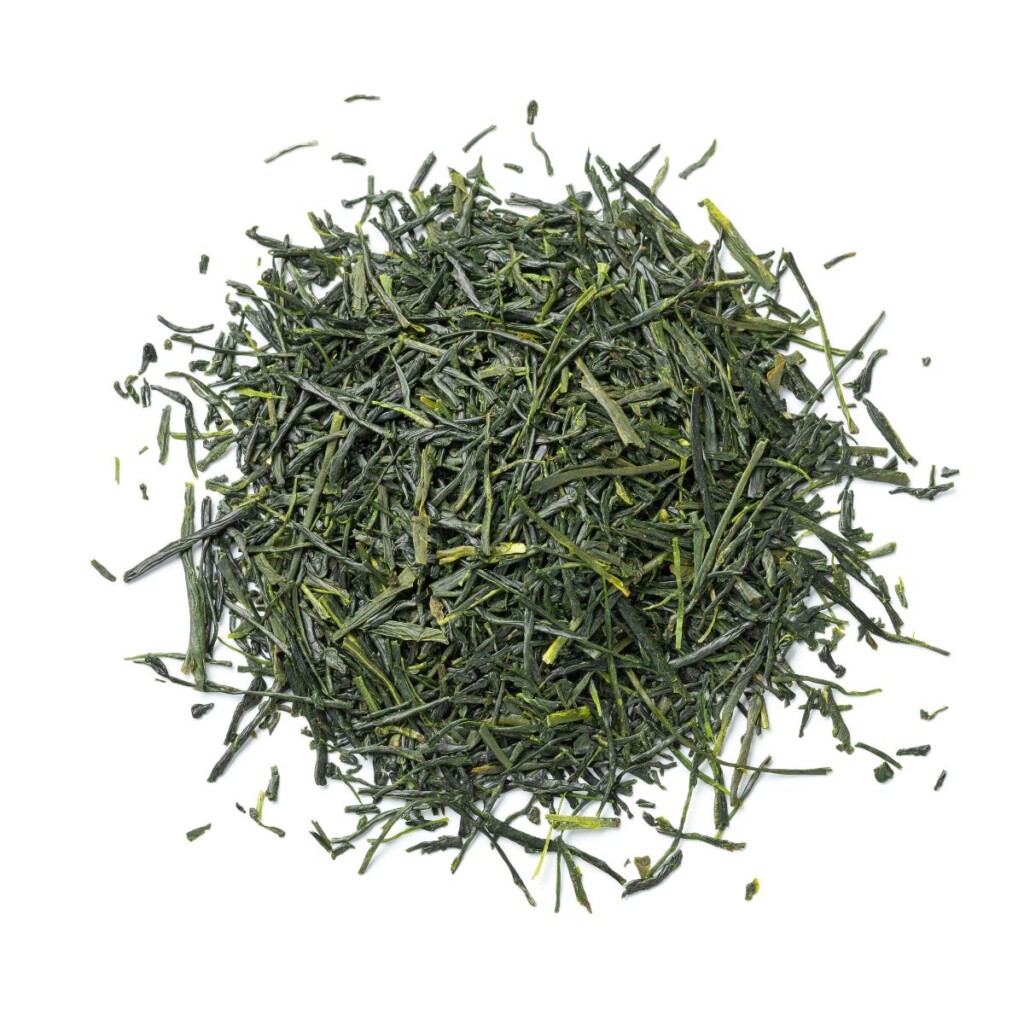
The word “kabuse” means “to cover” or “to shade” in Japanese. Like gyokuro, this is another shade grown tea. Well, it is shade grown for 1-2 weeks. This causes the leaves to produce higher levels of chlorophyll and amino acids, particularly L-theanine. This results in a sweeter, smoother taste compared to sencha (standard green tea). Shading gives the tea an umami flavor, which is one of its defining characteristics. It is also just a bit astringent, and has a pleasant grassy aroma.
Kamairicha
Kamairicha is a less well known Japanese tea compared to say sencha or matcha, and goes through a different processing method. The leaves are pan-fired which gives them a smoky roasted flavor and grassy aroma. It has an average caffeine content for green tea.
To brew Kamairicha, we recommend using water that is around 70-80°C (160-175°F). Steep the leaves for about 1-2 minutes, adjusting that time based on personal preference. Experiment with different steeping times to find the flavor strength that suits you best.
Konacha
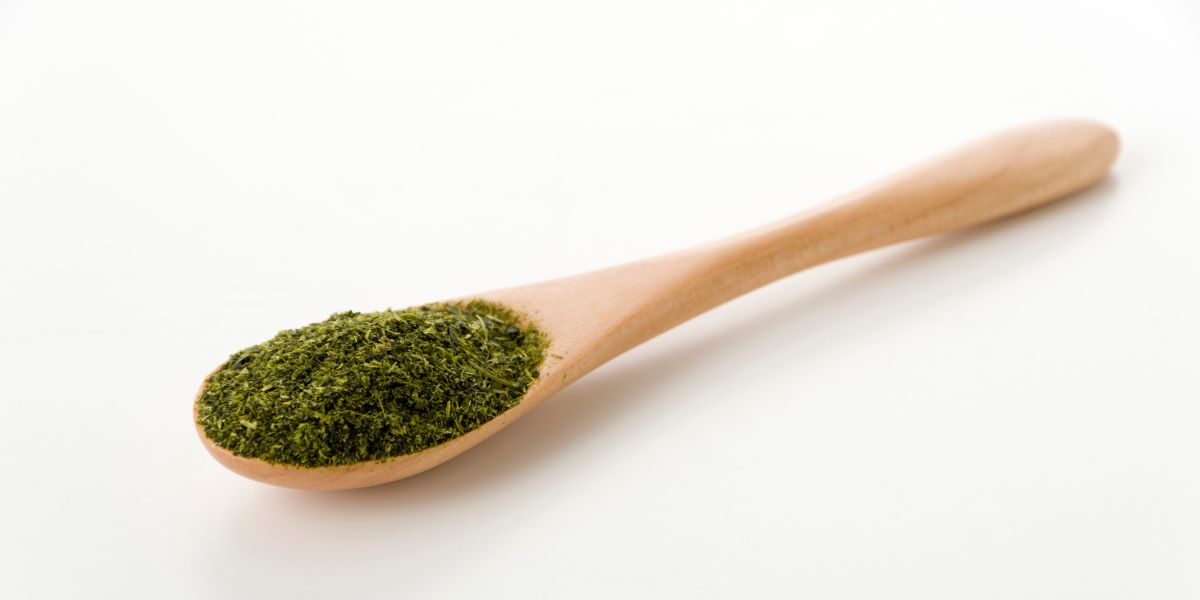
Konacha is also called “powdered tea” or “dust tea” due to its fine, powdery consistency as the photo shows. Konacha is made from the same tea leaves as high-quality sencha, but it is made from the smaller broken tea leaves, buds, and tea dust that result from the sorting process. So, I guess you could say it is made from the leftover parts.
It is a slightly bitter grassy tea with an earthy taste. Konacha has a vibrant green color with visible tiny tea particles, which create a cloudy appearance when brewed.
Because konacha has such small tea particles, it is prepared using a fine-meshed tea strainer or by pouring hot water directly into a teapot with the tea leaves. The tea is then served in small cups, and the fine particles mostly settle at the bottom of the cup.
Kukicha
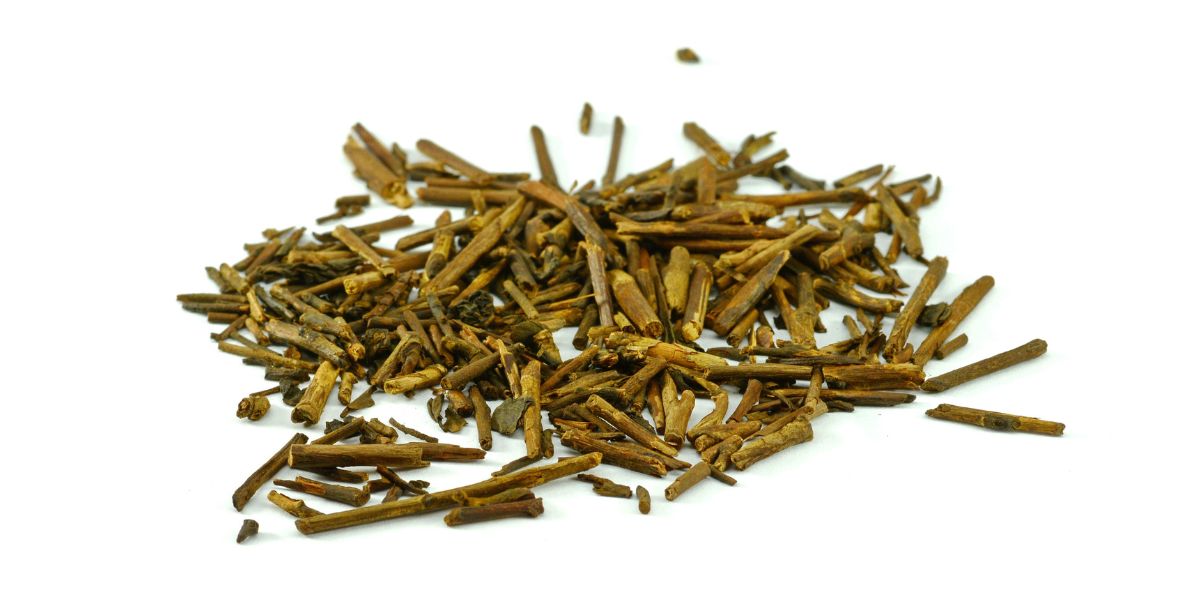
Kukicha green tea is also called “twig tea” or “bōcha,” Like konacha, it is a Japanese tea made from the stems, stalks, and twigs of the tea plant (Camellia sinensis). Basically it is made from the parts of the plant that are discarded with other teas.
After the tea parts are collected they are dried and aged. The aging gives kukicha its mild and slightly sweet taste. Kukicha has a very low caffeine content, which is a definite plus for people who are sensitive to too much caffeine.
Kukicha is usually brewed with water that is around 176-185°F (80-85°C) and steeped for a shorter time compared to other green teas, typically around 1-2 minutes. The resulting tea has a light green color and a pleasant, mild flavor.
Longjing
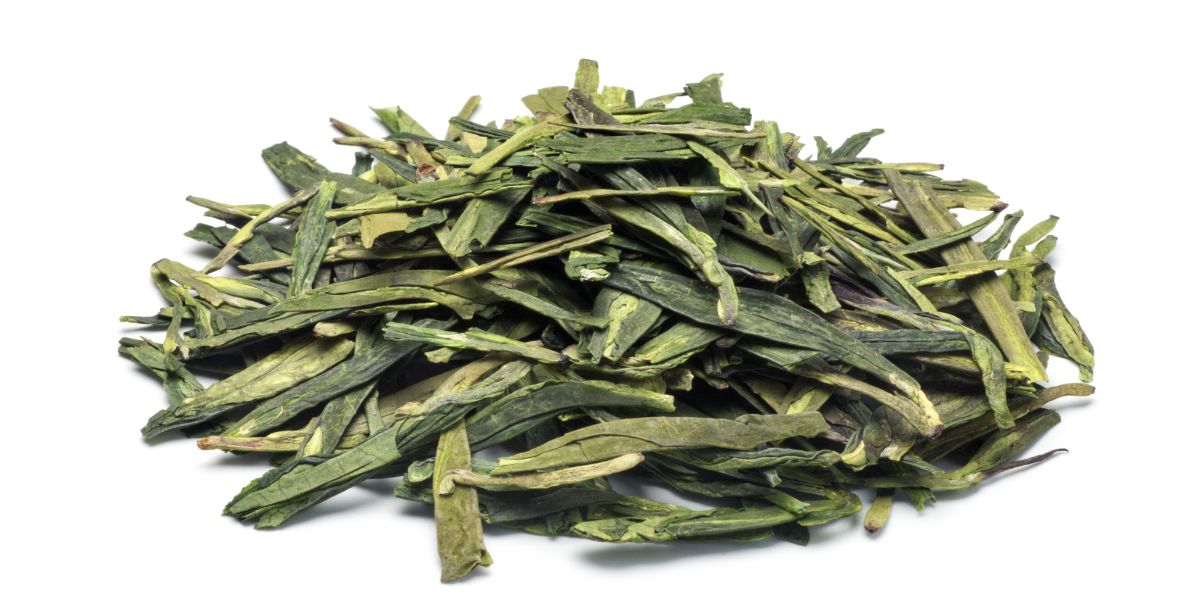
Longjing green tea is also called Dragon Well tea, and is one of China’s most well-known green teas. It is also the most drunk green tea in the USA. Longjing tea is made from the leaves of a specific tea cultivar called Camellia sinensis var. sinensis. Sorry, we had to include that crazy name.
The tea leaves are harvested in early spring which affects the flavor and quality of the tea. It has a mellow taste with a hint of chestnut and a sweet, lingering aftertaste. As the photo shows, longjing tea leaves are flat and smooth with a distinct emerald-green color.
In China, Longjing is traditionally brewed in a Gongfu tea ceremony. The tea leaves are steeped in a small teapot or a glass, using water at around 80°C (176°F). The leaves can be infused multiple times, and each infusion reveals different flavors and aromas.
Longjing is available in different grades, which are often distinguished by the quality of the leaves and the picking standards. The highest grade is known as “Lion Peak” or “Shi Feng,” which is grown on the Lion Peak Mountain and is pretty pricey. Other popular varieties include “Meijiawu,” “Wengjiashan,” and “Yuezhou Longjing.”
Matcha
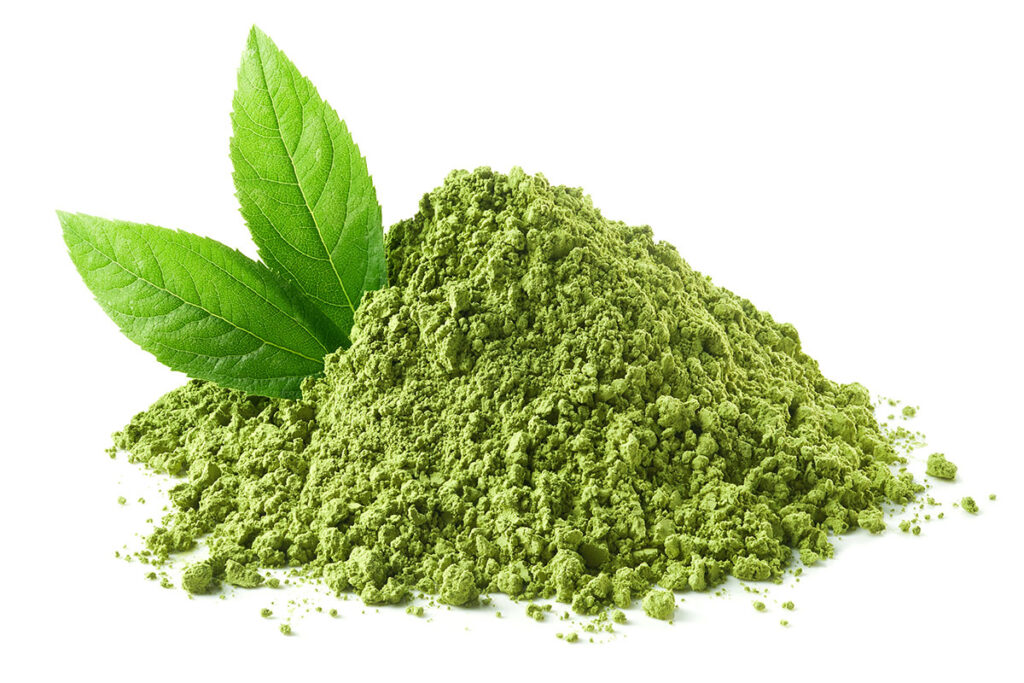
Matcha green tea is a powdered tea that originally came from Japan. It has gained popularity worldwide for its unique flavor, vibrant green color, and potential health benefits.
Matcha is a shade-grown tea. The plants are shaded for several weeks before harvest, which increases the chlorophyll content and gives the leaves a deep green color. The leaves are hand-picked to select the youngest and tenderest. After picking, the stems and veins are removed, and the leaves are ground into a fine powder using stone mills.
Matcha has a grassy and slightly sweet flavor. Some variations may have hints of umami, a savory taste. The aroma is sort of earthy. On average, matcha contains about 35 milligrams of caffeine per teaspoon (approximately 2 grams), while Starbucks coffee can easily exceed 200 mg.
It is brewed by sifting matcha powder into a bowl, adding hot water (not boiling), and whisking it vigorously with a bamboo whisk, called a chasen, until it becomes frothy. The resulting tea is then sipped directly from the bowl.
Moroccan Mint Tea
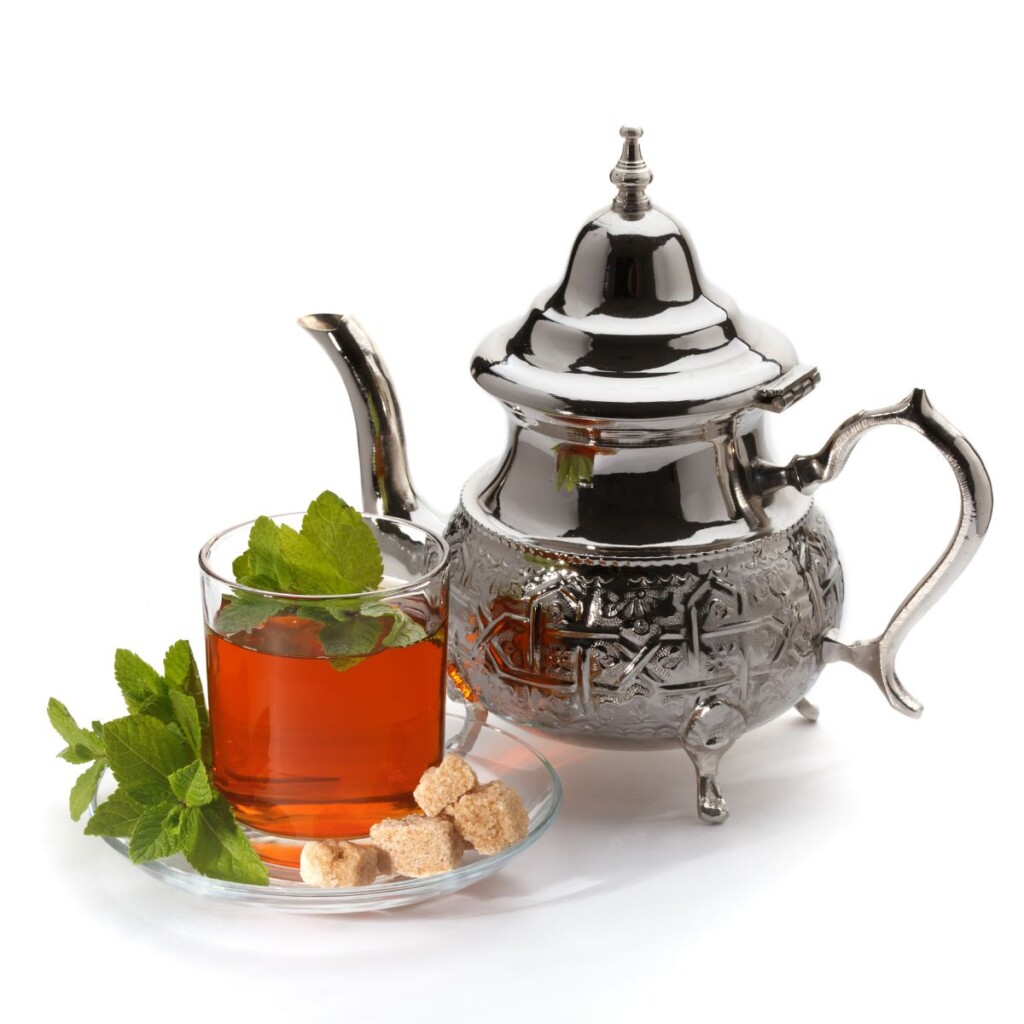
Moroccan Mint Green tea is also called “Maghrebi Mint tea” or just “Moroccan tea.” This tea truly has a special place in Moroccan culture stemming from the period when most of its people were nomadic.
This tea is made from a combination of gunpowder green tea, spearmint or peppermint leaves, and sugar. Moroccan enthusiasts insist upon fresh mint, and the sugar is added to balance the bitterness of the tea to make a mild, sweet, and highly aromatic tea.
In Morocco it is a symbol of hospitality and friendship, and is served in small, decorative glasses with intricate designs. The tea is poured from a height to create a frothy layer on top. It is also a point of pride for the host to pour the tea in a continuous stream into each glass.
This has become a very popular tea in the United States and you can find it at Whole Foods and other grocery stores.
Sencha
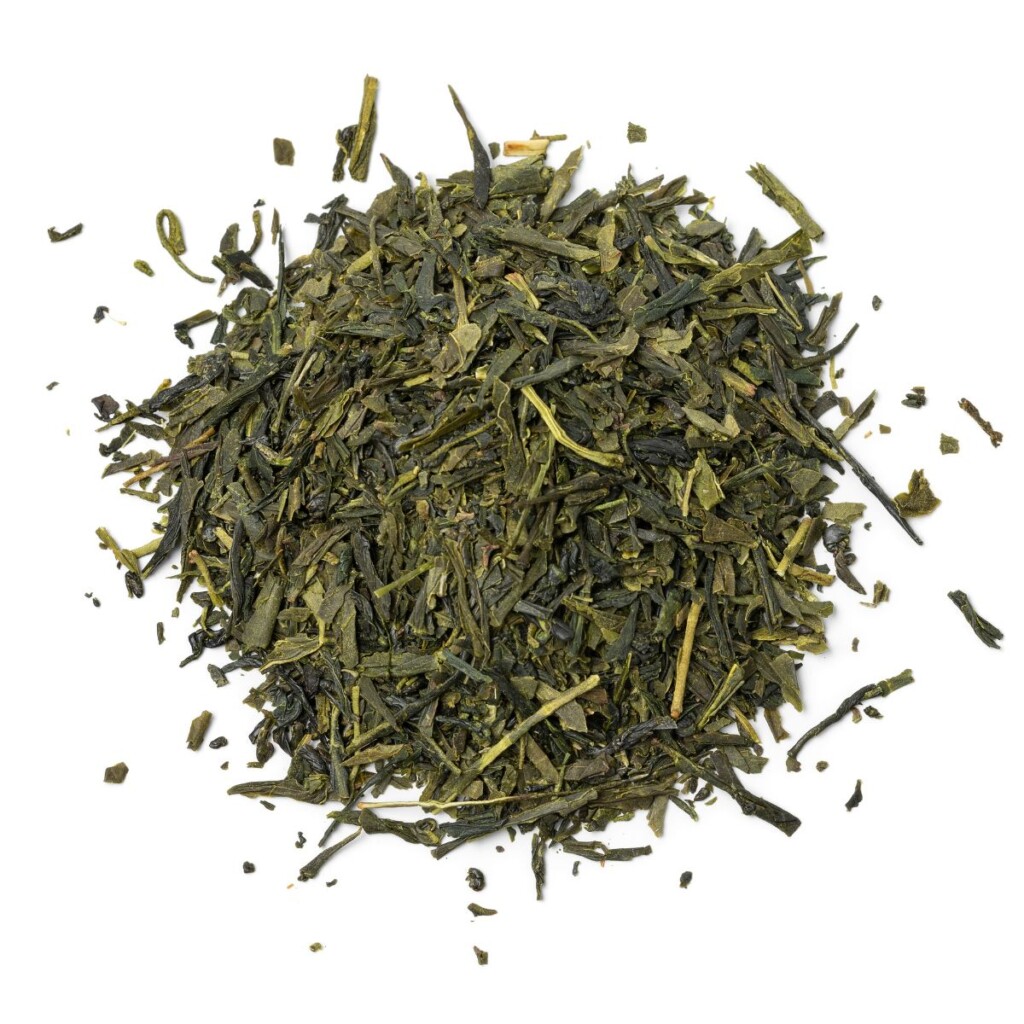
Sencha is one of the most popular teas in Japan as well as the USA. It has a slightly grassy flavor with a hint of astringency. The aroma is sweet and a bit nutty. The caffeine content is about average for a green tea.
Brew Sencha tea with water heated to 75-80°C (167-176°F), which is well below boiling. Don’t use boiling water, as it scorches the leaves and results in a bitter taste. Use 1 teaspoon (2 grams) of Sencha tea leaves per 8-ounce cup, and steep for about 1-2 minutes.
You can get sencha tea in various grades, based on the quality of the tea leaves. Higher grades come from younger leaves and have a smoother flavor. The highest-quality Sencha teas are usually produced in limited quantities and can be pretty expensive.
Steamed Green Tea (Fukamushi)
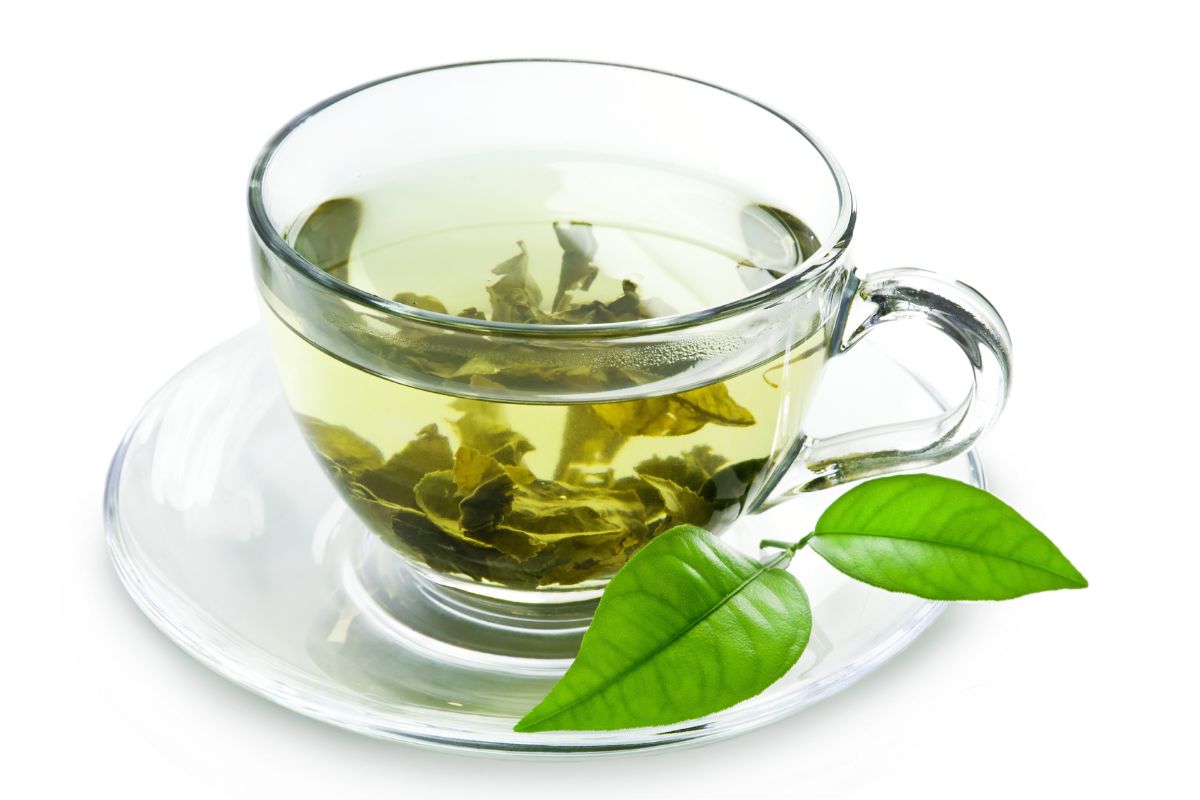
Fukamushi translates to “deep-steamed” in Japanese, referring to the longer steaming process used to make it compared to other green teas. The tea leaves are harvested in early spring and steamed for 2-3 minutes which is a good bit longer than is used in producing most green teas. This breaks down the leaf structure, and releases compounds in the leaves resulting in a deeper and more astringent taste with hints of umami.
Brew Fukamushi with water around 70-80°C (158-176°F). The lower temperature helps prevent the tea from becoming overly bitter. Also, only seep it for 30-60 seconds, as the smaller leaf particles release flavor more quickly.
Tencha
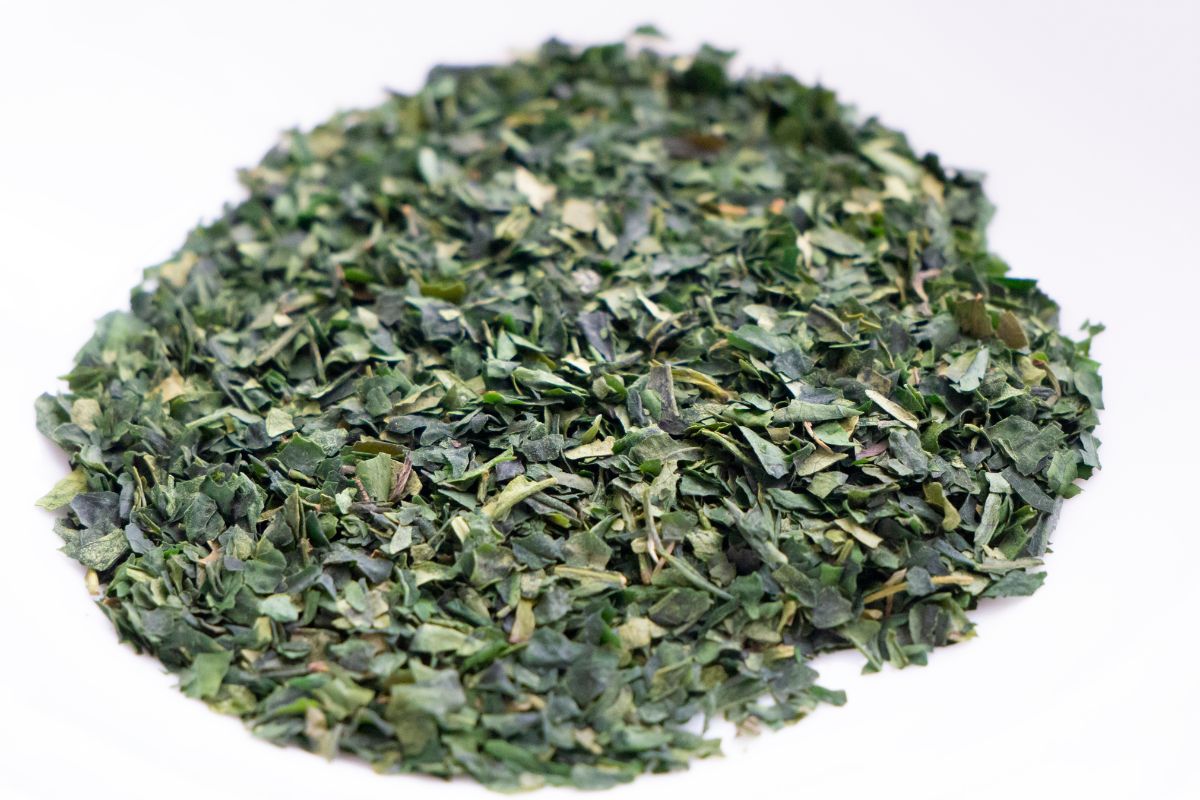
Tencha is primarily grown in shaded tea gardens in Japan. The tea plants are covered with shade cloth for several weeks before harvest to promote the growth of tender leaves with a high chlorophyll content. The leaves are hand-picked, selecting only the finest and youngest leaves from the tea bushes. The stems and veins are removed, leaving only the fleshy part of the leaves, known as tencha.
After harvesting, the tencha leaves are steamed to prevent oxidation. This helps preserve the fresh, grassy flavor and vibrant green color. The leaves are then dried and ground into a fine powder. Tencha has a umami flavor, mellow taste, and a sweet aftertaste. It is different from most green teas in that it is naturally sweet.
Triva Answer! The Answer is B Australia. The Aussies do have a way with words don’t they?


